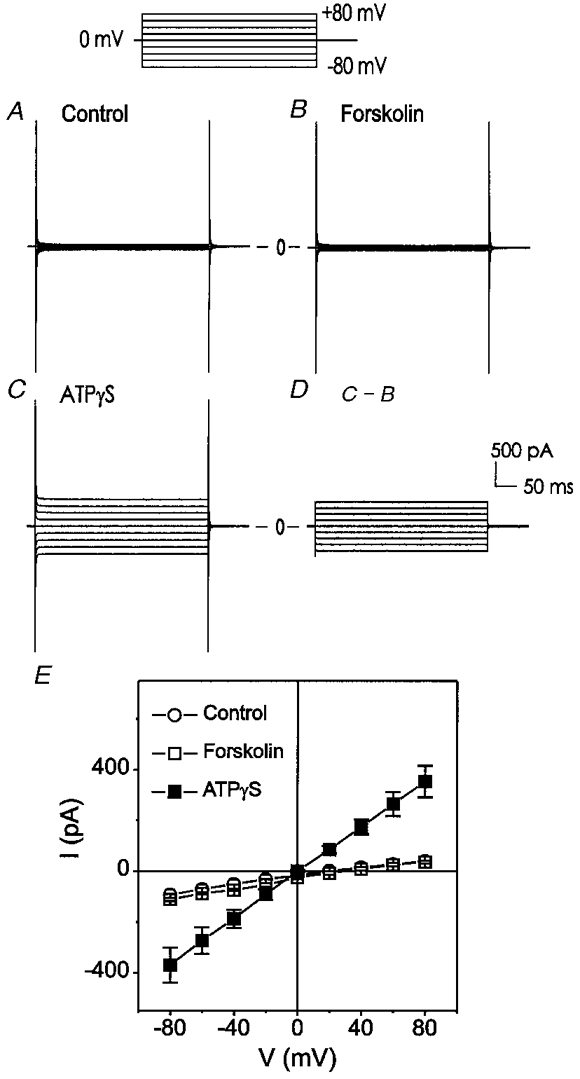Figure 1. Extracellular ATPγS, but not forskolin, activates a linear membrane conductance with reversal potential near the predicted equilibrium potential of Cl− under symmetrical 150 mM Cl−.

The voltage-clamp protocol is shown at the top. Cells were held at 0 mV and test potentials were applied from −80 to +80 mV in +20 mV increments at an interval of 10 s. A, negligible currents were detected under control conditions. B, subsequent exposure of the same cell to forskolin (10 μM) failed to activate any current. C, ATPγS (100 μM) caused a significant increase in membrane conductance. D, ATPγS (100 μM)-sensitive current. E, mean current-voltage (I–V) relationships of 6 different cells under control (○), forskolin (□), and ATPγS (100 μM) (▪) conditions.
